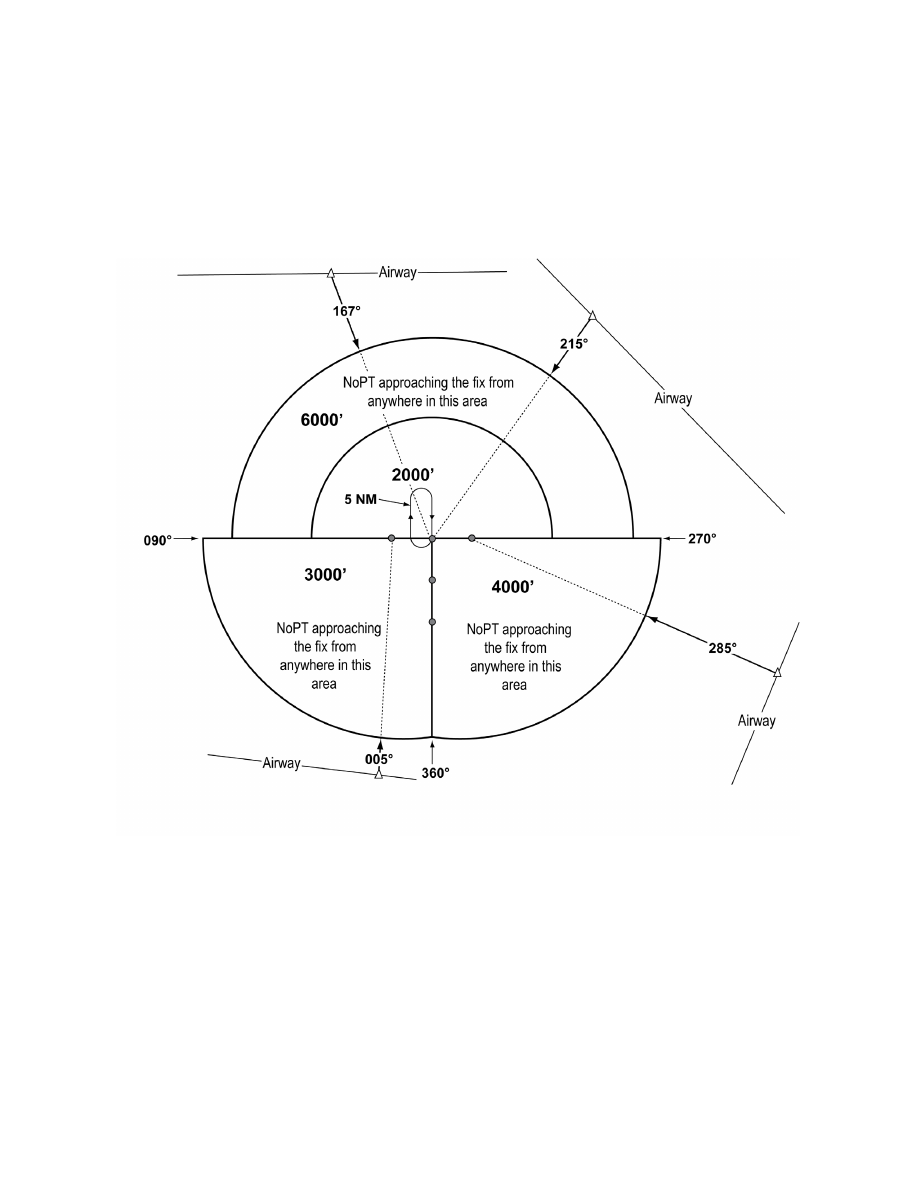
AIM
4/20/23
8.
When an airway does not cross the lateral TAA boundaries, a feeder route will be established from an
airway fix or NAVAID to the TAA boundary to provide a transition from the en route structure to the appropriate
IAF. Each feeder route will terminate at the TAA boundary and will be aligned along a path pointing to the
associated IAF. Pilots should descend to the TAA altitude after crossing the TAA boundary and cleared for the
approach by ATC. (See FIG 5
10).
FIG 5
−
4
−
10
Examples of a TAA with Feeders from an Airway
9.
Each waypoint on the “T” is assigned a pronounceable 5
−
letter name, except the missed approach
waypoint. These names are used for ATC communications, RNAV databases, and aeronautical navigation
products. The missed approach waypoint is assigned a pronounceable name when it is not located at the runway
threshold.
Arrival Procedures
5
−
4
−
18